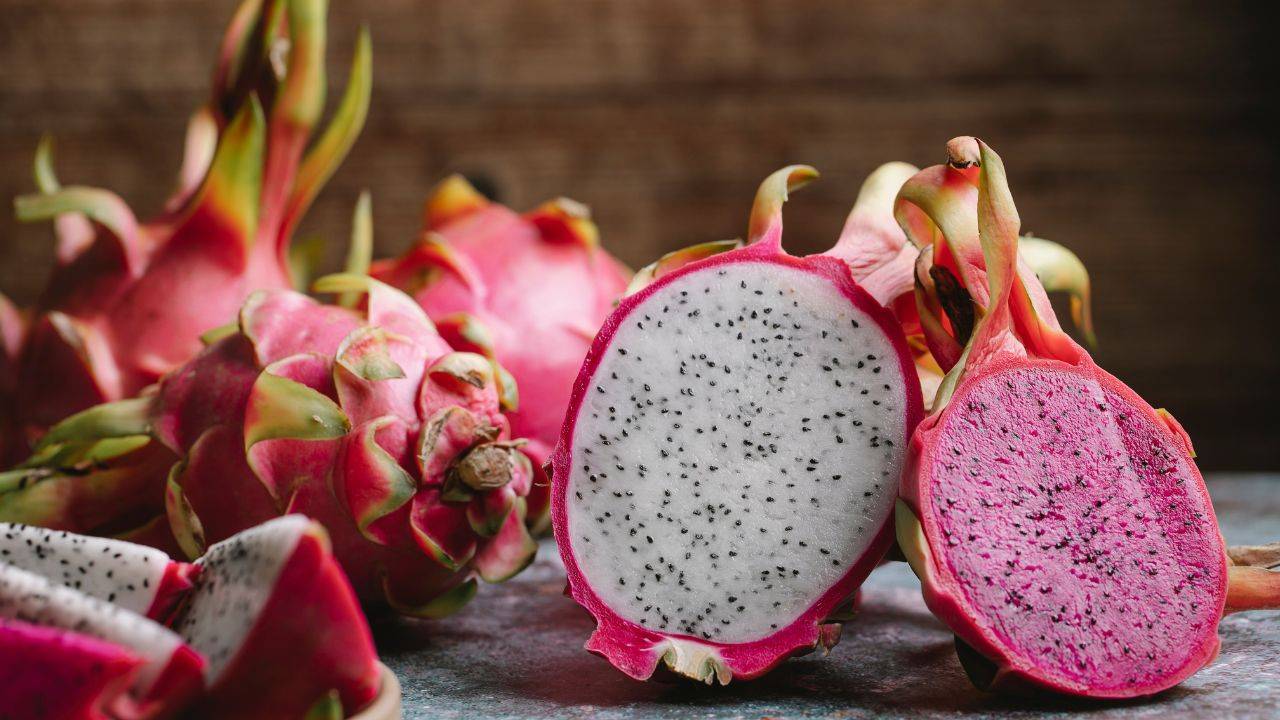
A growing number of farmers are turning to dragon fruit cultivation alongside their traditional crops in various districts of Uttar Pradesh. This exotic fruit, known for its striking red-purple appearance and intriguing name, is capturing the attention of Indian cultivators.
It's not just its aesthetics but also its economic potential and numerous health benefits that are driving high demand.
Shift in Dragon Fruit Cultivation
Traditionally, dragon fruit was primarily cultivated in the southern and eastern states of India. However, a significant shift is underway, with farmers in several districts of Uttar Pradesh now joining the dragon fruit craze. What's attracting them are the promising returns on investment and government subsidies.
Dragon Fruit Farming in Uttar Pradesh
According to the horticulture department, over 300 farmers in the Mirzapur and Varanasi regions have dedicated approximately 125 acres of land to dragon fruit cultivation. Similarly, in Sonbhadra, 60-70 farmers have committed 45 acres to this exotic fruit.
Economic Viability
Dragon fruit offers rapid returns on investment, with economic production possible within the first year of planting. Full production is achieved in 3-4 years, and once established, a dragon fruit plant can produce fruit for 20-25 years, with an average yield of 10 tonnes per acre after two years.
Meva Ram, the district horticulture officer of Mirzapur, explains, "From the third year onwards, one can generate a profit of approximately ₹10 lakh per acre, with each fruit selling for between ₹50 and ₹60, and subsequently doubling in price at retail."
High Demand Outpaces Supply
The demand for dragon fruit is so high that farmers are struggling to keep up, and even local markets can't meet export demands. This surge in demand is particularly pronounced during dengue fever outbreaks, as people prefer dragon fruit over kiwi due to its perceived health benefits.
Unique Cultivation Methods
Dragon fruit plants have a unique appearance, resembling hawthorns or cacti, with soft stems that require support for growth. Farmers in the region erect cemented pillar-like structures for each plant and place a vehicle tire at the top for the plants to spread further. Recognizing the investment required, the government offers grants to farmers to facilitate this innovative cultivation method.
Government Initiatives and Grants
The Uttar Pradesh government supports dragon fruit cultivation under the Atmanirbhar Bharat initiative and provides financial assistance of Rs 30,000 per hectare to farmers who cultivate dragon fruit. Additionally, the state horticulture department offers technical support.
Rapid Growth of Exotic Fruit Cultivation
Dragon fruit is not the only exotic fruit gaining traction among farmers in Uttar Pradesh. Avocado, blueberry, strawberry, and dragon fruit are all becoming popular choices, with the Mirzapur, Prayagraj, and Sonbhadra regions leading the way.
Reducing Imports and Boosting Domestic Production
Currently, a significant portion of the dragon fruit available in the Indian market is imported from countries like Thailand, Malaysia, Vietnam, and Sri Lanka. However, with a focus on self-reliance (Atmanirbhar Bharat), efforts are being made to reduce imports and enhance India's production capacity under the Mission for Integrated Development of Horticulture (MIDH).
Dragon Fruit's Health Benefits
Health experts highlight various health advantages of dragon fruit, including its ability to alleviate constipation and diabetes, enhance the immune system, and aid digestion. The fruit is rich in vitamins C and A, among other essential nutrients. Notably, it is particularly beneficial during dengue fever outbreaks.
The cultivation of dragon fruit in Uttar Pradesh is experiencing a significant surge in popularity among farmers. Its rapid economic returns, government support, and high demand are driving this shift from traditional crops. With its numerous health benefits and unique cultivation methods, dragon fruit has become a promising option for agricultural diversification in northern India, marking a substantial shift from its historical growth in the southern and eastern regions of the country.
















